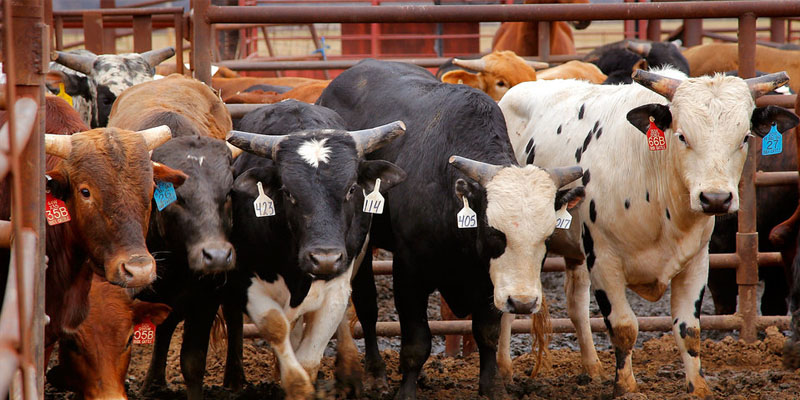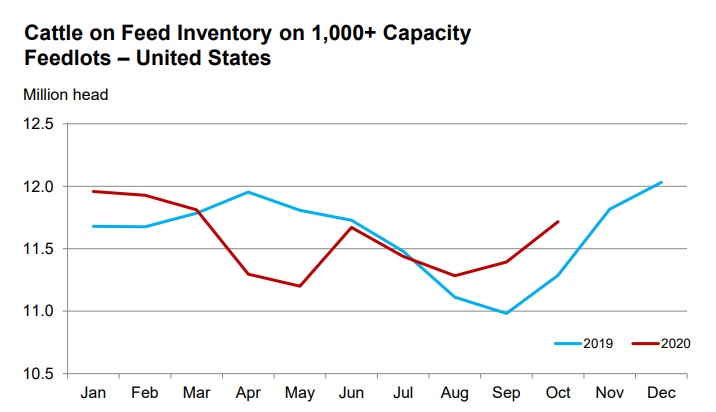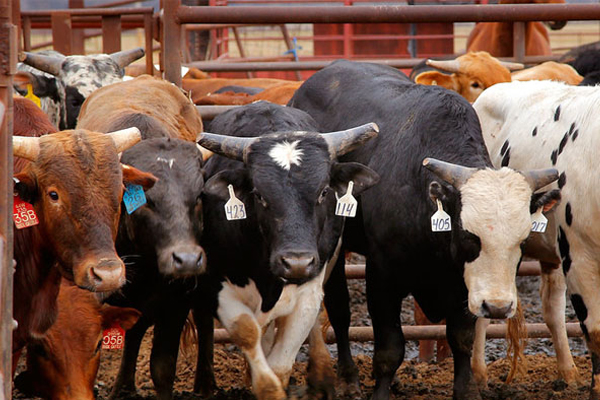October 27
Leather and Hide Weekly
The Leather and Hide Council of America (LHCA) continues to monitor developments related to the COVID-19 pandemic, and is available to support members navigating this rapidly evolving situation. Thank you to all who participated in LHCA's successful first Annual Meeting last week. The virtual event included Board of Directors and Committee meetings, along with insightful updates about LHCA's global marketing campaign, Real Leather. Stay Different., and thoughtful presentations about leather's sustainability from leading experts. LHCA also unveiled its new website, www.usleather.org, during the meeting. More on the new website and other topics below.
We hope you stay safe and healthy.

Weekly Hides and Skins Stats
- Net sales of cured cattle hides reported for the period ending October 15 were 480,700 pieces and of wet blue were 173,100 pieces. Reported shipments of cured hides were 397,700 and of wet blue were 127,000. China was the largest buyer of cured hides and Italy was the largest destination for wet blues. See more. For historical data, click here.
- U.S. Cattle Slaughter was 643,000 last week, up 1.7 percent from the previous week. Total cattle slaughter in 2020 is 26,110,000, 3.8 percent below 2019 levels. See more.
- USDA AMS Major Packer Hide Price Report provided prices for six types of U.S. hides at 10 price points with a spread of $15 for branded heifers to $35.50 for heavy native steers. See more.
- The USDA price report is a snapshot of the market. For real time hide market prices, please consult our friends at Hidenet, The Jacobsen, The Maxfield Report, or The Sauer Report.
Industry Updates
- LHCA last week unveiled a new, comprehensive website, www.usleather.org, during the Association's first Annual Meeting, which convened virtually amid the COVID-19 pandemic. The sleek, new, user-friendly site is a one-stop-shop for information about the U.S. hide, skin and leather industry, with content that will interest both industry novices and experts alike. Annual Meeting attendees also received updates about LHCA's acclaimed leather marketing campaign and engaged in numerous discussions that underscored the sustainability of leather. More here about the website and LHCA's inaugural Annual Meeting.
- NSW Leather Co., the largest leather wholesaler in Australia, is looking for U.S. suppliers of hair-on products, primarily deer skins (chital deer and axis deer). More information about the company can be found here and here. Interested parties should contact Ian Fischl.
- The North American Meat Institute continues to share guidance documents and other resources for industry on its COVID-19 response webpage. The page includes the latest guidance from the Centers for Disease Control and Prevention (CDC) regarding face coverings, employee screening and positive test result protocol, among other pertinent resources. CDC and the Department of Labor issued guidance specific to the meat and poultry processing industry in order to facilitate ongoing operations and support the food supply, while also mitigating the risk of spreading COVID-19. The guidance is available here.
Latest Updates from Real Leather. Stay Different.

With demand rising for more customized and sustainable clothing, it's no surprise consumers are increasingly drawn to leather products. One Toronto-based company has answered this call by crafting durable, beautiful, individualized leather jackets and accessories. The result: one-of-a-kind pieces that last a lifetime and never go out of style. Get the latest news from Real Leather. Stay Different. here. And, don't forget to:
Other Trade News
- USDA’s Animal and Plant Health Inspection Service (APHIS) Veterinary Services temporarily updated its inspections process for live animal export facility renewals and animal product facilities. For live animal export facility renewal inspections, USDA-accredited veterinarians, who supervise approved facilities, will conduct renewal inspections on behalf of APHIS. APHIS inspectors will then conduct onsite inspections after travel restrictions have been lifted. Exporters are urged to initiate the re-inspection process for specific markets, especially the European Union, at least three months prior to the expiration of their current certification. Many exporters are waiting until the end of their certification grace period, which is causing significant delays in the re-certification process. More here.
- The U.S. and Brazil announced the conclusion of a new protocol on trande rules and transparency. The protocol updates the 2011 U.S.-Brazil Agreement on Trade and Economic Cooperation with new annexes on customs administration and trade facilitation, good regulatory practices and anticorruption. The full text of the protocol and a fact sheet are available here.
- The Government Relations and Public Policy team at Kelley, Drye & Warren LLP delivered a preview of the upcoming 2020 U.S. General Election. The presentation, which is available here, provides an overview of the current state of play of the U.S. Presidential and Congressional races.
Monthly Data
- Monthly Livestock Slaughter report is now available. September 2020 cattle slaughter totaled 2.81 million head, up 5 percent from September 2019. Get a summary of the data here.
- Cattle and calves on feed for the slaughter market as of October 1, 2020, totaled 11.7 million head. The inventory was 4 percent above October 1, 2019. Read the report here.

A dry pattern continued this week over large portions of the continental United States, with a few exceptions begin areas impacted by Hurricane Delta or its remnants, parts of the Upper Midwest and middle Missouri River Valley, and parts of the Northeast. In areas of the Northeast that received an inch or two of rain, some improvements were made in the ongoing drought areas there. As a storm system and associated cold front brought showers and thunderstorms to parts of the Middle and Upper Missouri River Valley and to the Upper Midwest, some improvements were made to ongoing drought there. Abnormal dryness abated in a few areas of Louisiana and Mississippi, which received copious rainfall from Hurricane Delta. Degradations or persistence of ongoing drought was common in parts of the Midwest, Great Plains and West that received little or no precipitation this week. Temperatures this week were warmer than normal across most of the Lower 48. The central Great Plains and middle Missouri River Valley were the warmest compared to normal, with temperatures from 9 to 12 degrees above normal common. New England experienced milder conditions this week, with a few below-normal readings in northern Vermont, New Hampshire and Maine.
Leather News
Each week, we will share relevant leather news below. Some of the articles may cover our products, and the industry, unfavorably, but we still believe it is important to share the different ways in which leather is presented in the media. If you find articles that you would like to see included, please send them to mschumpp@meatinstitute.org.




